Two beauties doubling down on defense: The polka-dot wasp moth, Syntomeida epilais, and spotted oleander caterpillar moth, Empyreuma pugione
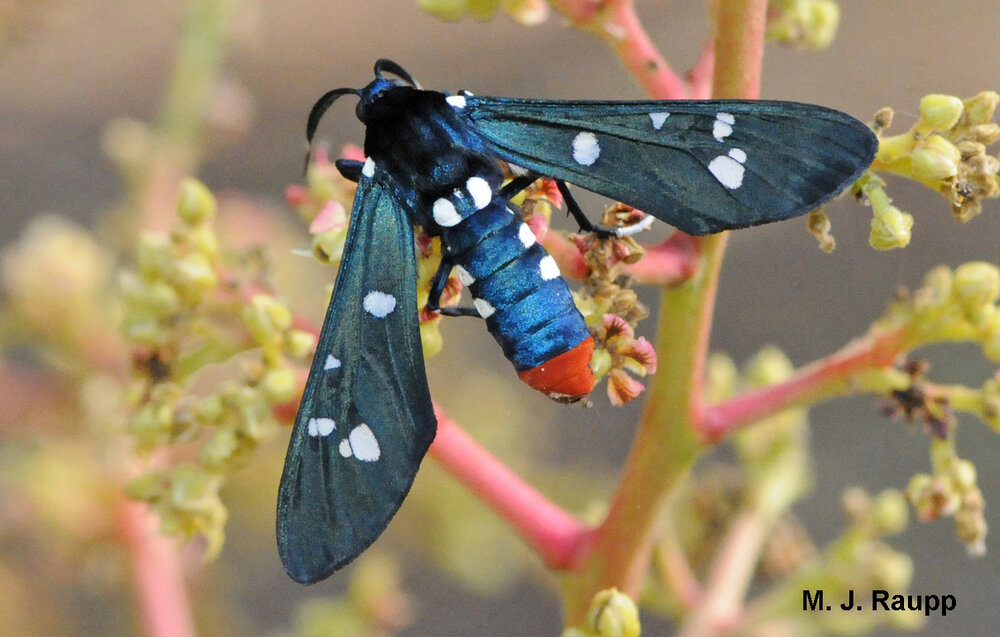
A waspy mien, iridescent blue wings and body with white polka-dots, and a red-tipped abdomen may help the beautiful polka-dot moth escape the jaws of hungry predators.
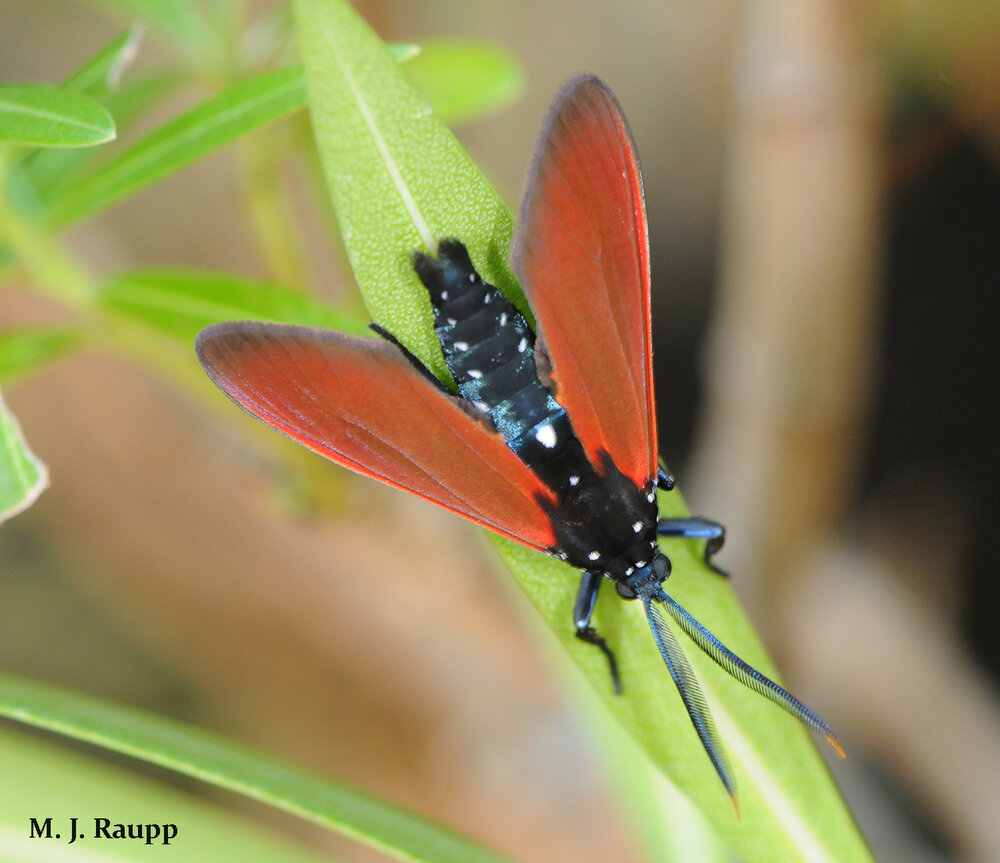
The beautiful spotted oleander caterpillar moth’s vivid orange and black coloration and resemblance to a wasp may be a warning to would-be predators.
For the last several weeks we have escape lingering chilly and dreary weather in Maryland to visit elegant phasmatids in Chile, pleasing fungus beetles in Peru, and creepy whip spiders in Costa Rica. This week we return to the good old USA and the semi-tropical warmth of southern Florida to meet a pair of breathtaking tiger moths and their similarly stunning offspring. While many tasty insects like lantern flies, beetles, and katydids depend on cryptic coloration to avoid the hungry jaws of predators, the spectacular iridescent colors of the polka-dot wasp moth and the spotted oleander caterpillar moth shout “here I am, eat me if you dare!” How then do these scaly winged harlequins escape the sharp beaks and pointy teeth of vertebrate predators? Two schemes are at play.
First, the general resemblance of these non-stinging moths to a stinging wasp probably brings pause to hungry birds that have learned to avoid making meals of painful, stinging insects. The second defense lies in the food consumed by these moths in their youth. Larvae of the polka-dot moth are known as oleander caterpillars and larvae of the spotted oleander caterpillar moths are known as … well, take a wild guess. Their diets include leaves of oleander, a beautiful but deadly woody shrub brought to the New World by European colonists.
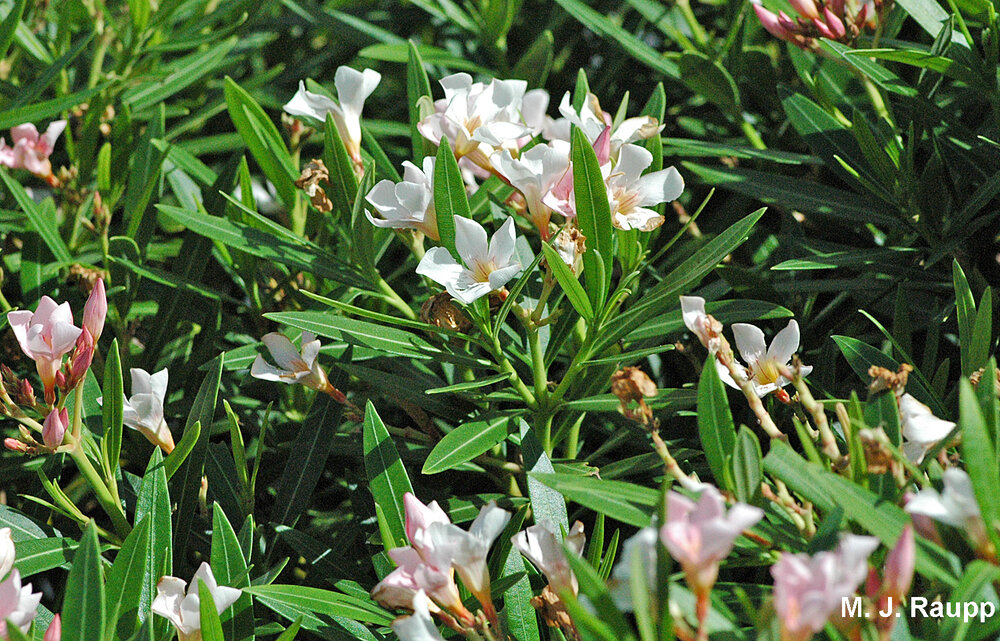
When colonists brought oleander to the New World, this plant of Mediterranean origin became an important larval food source for the polka-dot wasp moth and spotted oleander caterpillar moth.
Oleander is a toxic member of the family Apocynaceae. Leaves, flowers, and fruit of oleander are laced with heart-stopping poisons known as cardiac glycosides. We were introduced to cardiac glycosides in the Apocynaceae in a previous episode where we learned of the ability of dogbane beetles to acquire these compounds and use them as a defense against predators. Like their milkweed feeding cousins the monarch butterflies, oleander caterpillars ingest and store cardiac glycosides that are passed along to the adult stage where they serve as dietary punishment for predators attempting to eat the glycoside-laced moths. The contrasting pattern of black dots on a bright orange background of the polka-dot moth caterpillar and the white splotches on the body of the spotted oleander caterpillar, convey strong visual images and a reminder that dining on either of these caterpillars can result in disagreeable digestive consequences. Striking warning colors and patterns are called aposematic coloration, a clever strategy employed by monarch butterflies, milkweed bugs, dogbane beetles, yellow jackets, Asian giant hornets, and many other colorful insects we have visited.
Watch as the spotted oleander caterpillar dines on an oleander leaf. Like its native North American cousin, the oleander caterpillar (larva of the polka-dot moth), the spotted oleander caterpillar consumes foliage of this poisonous woody shrub in south Florida. Noxious cardiac glycosides obtained by the caterpillar from oleander may be passed along to the adult moth to dissuade attack by hungry predators.
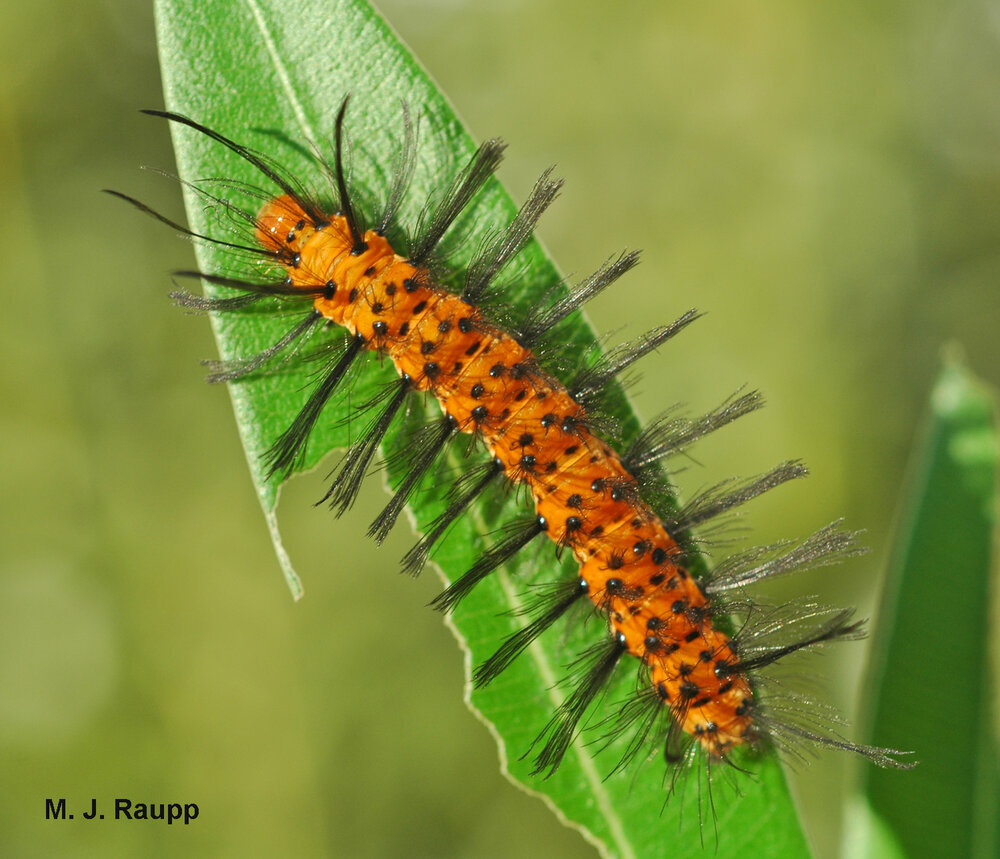
Oleander caterpillars have dark spots and black hair tufts lining their body.
The female polka-dot moth truly is gorgeous and it is little wonder that males of this species find such a beauty irresistible. But finding a mate is challenging for small moths in big world. Many female moths and other insects solve this problem by using chemical attractants called pheromones to signal their willingness to play the mating game. Most female moths release pheromones from specialized abdominal glands that help guide otherwise haplessly searching males to their connubial reward. However, the female polka-dot moth relies on yet another strategy to attract her mate. By vibrating plates called tymbals on the sides of her thorax, the female moth creates a rhythmic clicking sound, a kind of a mothy “yoo-who” to attract a suitor. In return, the male adds his own clicks to create an ultrasonic duet. Unfortunately, their love songs are beyond the range of the human ear. However, if the lucky couple harmonizes successfully, the result of their union may be dozens of tiny orange caterpillars decorating oleander. If travel brings you to sunny south Florida for spring break or a welcome escape from a lingering winter, be sure to visit an oleander or two and perhaps you will catch a glimpse of these beautiful moths or their interesting aposematic offspring.
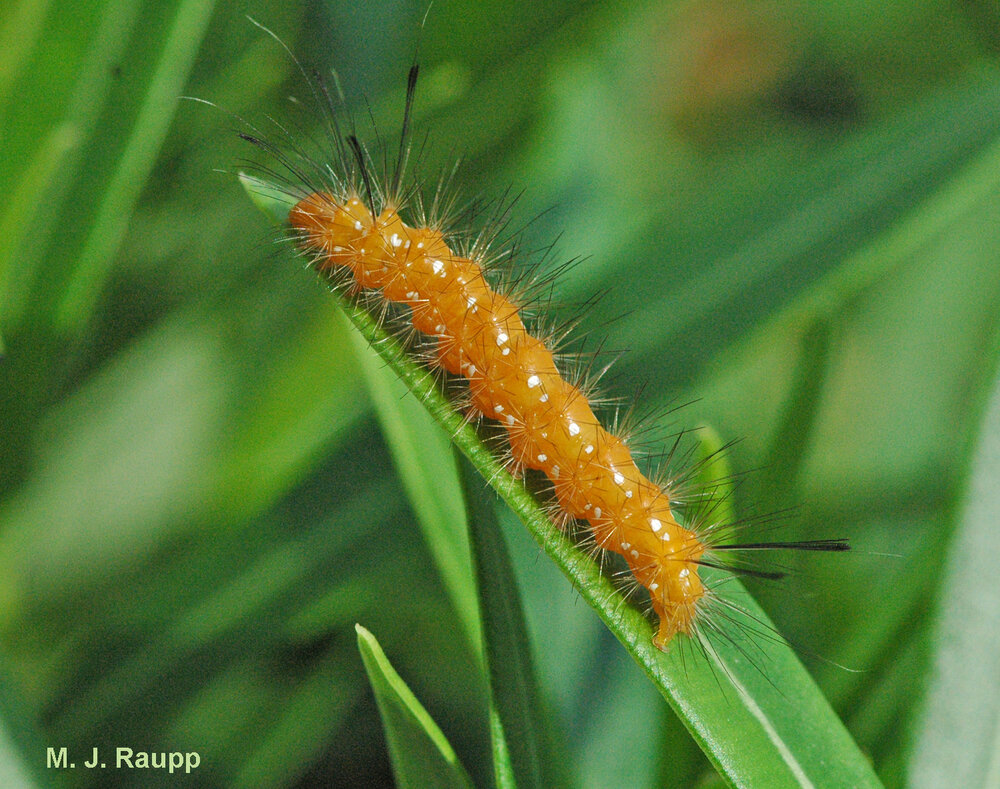
Spotted oleander caterpillars have light colored spots and predominantly reddish-brown hair tufts.
Acknowledgements
To learn more about the polka-dot wasp moth and the spotted oleander caterpillar moth please visit the wonderful Featured Creature articles by H. McAuslane, “Oleander caterpillar, Syntomeida epilais…” and “Spotted oleander caterpillar moth (suggested common name), Empyreuma pugione…”. These web pages and two fascinating articles, one by M. Rothschild and her colleagues “Cardiac glycosides (heart poisons) in the polka-dot moth Syntomeida epilais Walk. (Ctenuchidae: Lep.) with some observations on the toxic qualities of Amata (=Syntomis) phegea (L.), and another by M. Sanderford and W. Conner, “Courtship sounds of the polka-dot wasp moth, Syntomeida epilais” were used to prepare this episode.
This post appeared first on Bug of the Week